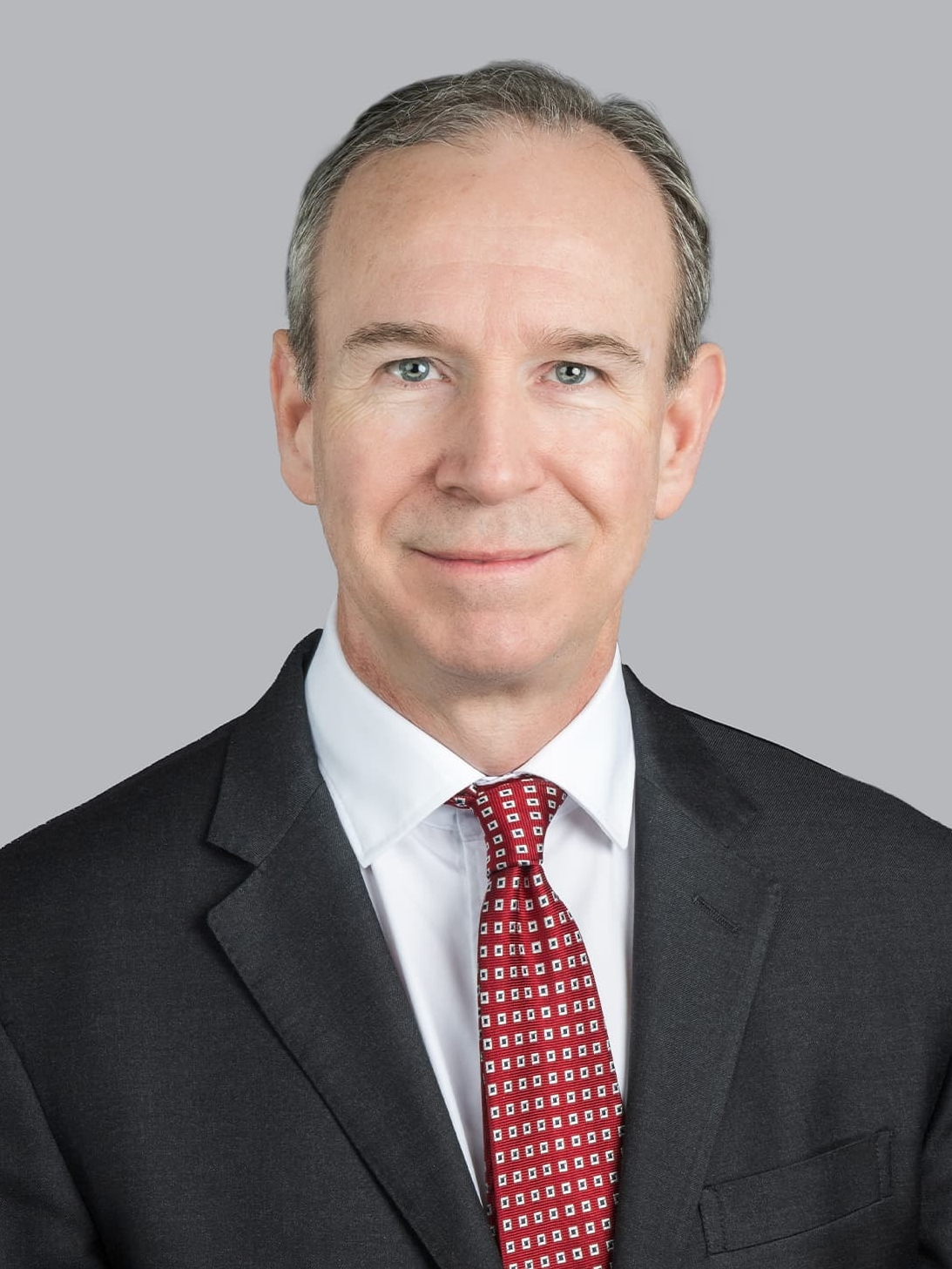
Phillip B. Storm, MD
Areas of expertise: Aneurysms, Arteriovenous malformation (AVM), Moyamoya disease, Spine tumors, Brain tumors, Complex spine, Hydrocephalus, Skull base surgery, Skull base tumors, Vascular malformations/birthmarks
Locations: Main Building
About Phillip B. Storm, MD
Dr. Storm is an internationally recognized pediatric neurosurgeon specializing in brain and spine tumors, with particular expertise in endoscopic skull base surgery. As Chief of the Division of Neurosurgery at the Children's Hospital of Philadelphia (CHOP) and Director of the Center for Data Driven Discovery in Biomedicine (D3b), he has pioneered groundbreaking advances in surgical techniques, translational research, and precision medicine.
Dr. Storm’s clinical focus spans the treatment of all pediatric brain tumors, including low-grade gliomas, medulloblastomas, atypical teratoid rhabdoid tumors (AT/RT), and skull base tumors such as acoustic neuromas, craniopharyngiomas, and large cerebellopontine angle ependymomas. Recognizing the need for less invasive surgical options, he partnered with Penn Rhinologists to establish CHOP’s Endonasal Skull Base Program, which has since become the leading pediatric program of its kind. His work in endoscopic skull base surgery extends to the youngest patients, having successfully performed endonasal procedures on infants as young as three months old. His research has demonstrated that minimally invasive endonasal approaches can achieve complete tumor resection with reduced surgical morbidity, improving outcomes for children with craniopharyngiomas and other challenging skull base tumors.
Beyond surgery, Dr. Storm has transformed the landscape of pediatric brain tumor research with his longtime friend and D3b co-founder and Director, Adam Resnick, Ph.D. As Directors of D3b, they have spearheaded efforts to integrate genomics, proteomics, and large-scale data platforms to develop more effective, targeted therapies. They also launched CAVATICA, a cloud-based biomedical data analysis platform supporting collaborative research in pediatric oncology.
Dr. Storm built infrastructure ensuring that every tumor resected at CHOP undergoes molecular profiling to guide personalized treatment. A key partnership to accelerating advances in pediatric neuro-oncology is with the Children’s Brain Tumor Network (CBTN). The CBTN is an international consortium dedicated to real-time, open-data sharing and D3b is the coordinating center for the CBTN. This partnership has built one of the most comprehensive tumor biobanking and sequencing initiatives in the world.
Under Dr. Storm’s leadership, CHOP Neurosurgery has grown into one of the highest-volume pediatric neurosurgery programs in the nation, integrating cutting-edge clinical and research programs. Through these initiatives, CHOP Neurosurgery has secured over $150 million in NIH funding and philanthropic support, advancing both pediatric and adult brain tumor research.
Dr. Storm’s leadership is best stated in his own words, “My team and I are deeply committed to innovation and collaboration to shape the future of neurosurgery by advancing curative treatments for pediatric brain tumors, with the ultimate goal of putting me out of the tumor business.”
Titles
Chief, Division of Neurosurgery
Professor of Neurosurgery, Perelman School of Medicine at the University of Pennsylvania
Certifications
Neurological Surgery – American Board of Neurological Surgery
Editorial and Academic Positions
2009, Faculty, AO Spine North America, Principles and Treatment of Spinal Disorders for Residents and Fellows, Las Vegas, NV
2009, Brain and Behavior Course for first year medical students at the University of Pennsylvania, Philadelphia, PA
2009, Faculty, AO Spine North America, Principles and Treatment of Spinal Disorders for Residents and Fellows, Philadelphia, PA
2009, Faculty, Pediatric Spinal Deformity Residents Course, Philadelphia, PA
Education & training
Medical Degree
MD - Johns Hopkins University School of Medicine, Baltimore, MD
Internship
General Surgery - Johns Hopkins Hospital, Baltimore, MD
Residency
Neurosurgery - Johns Hopkins Hospital, Baltimore, MD
Fellowship
Neuro-Oncology Research Fellow - Johns Hopkins Hospital, Baltimore, MD
Pediatric Neurosurgery - The Children's Hospital of Philadelphia, Philadelphia, PA
Publications
Publications
2019
Heuer GG, Madsen PJ, Flanders TM, Kennedy BC, Storm PB, Taylor JA. Separation of Craniopagus Twins by a Multidisciplinary Team. N Engl J Med. 2019 Jan 24;380(4):358-364. doi: 10.1056/NEJMoa1805132.
2017
Pisapia JM, Akbari H, Rozycki M, Goldstein H, Bakas S, Rathore S, Moldenhauer JS, Storm PB, Zarnow DM, Anderson RCE, Heuer GG, Davatzikos C. Use of Fetal Magnetic Resonance Image Analysis and Machine Learning to Predict the Need for Postnatal Cerebrospinal Fluid Diversion in Fetal Ventriculomegaly. JAMA Pediatr. 2017 Dec 18. doi: 10.1001/jamapediatrics.2017.3993. [Epub ahead of print]
Pisapia JM, Rozycki M, Akbari H, Bakas S, Thawani JP, Moldenhauer JS, Storm PB, Zarnow DM, Davatzikos C, Heuer GG. Correlations of atrial diameter and frontooccipital horn ratio with ventricle size in fetal ventriculomegaly. J Neurosurg Pediatr. 2017 Mar;19(3):300-306.
2014
Lang SS, Goldberg E, Zarnow D, Johnson MP, Storm PB, Heuer GG. Prenatal diagnosis of hemimegalencephaly. World Neurosurg. 2014 Jul-Aug;82(1-2):241.e5-8.
2010
Beslow LA, Ichord RN, Kasner SE, Mullen MT, Licht DJ, Smith SE, Storm PB, Jordan LC, Messé SR. ABC/XYZ estimates intracerebral hemorrhage volume as a percent of total brain volume in children. Stroke. 2010 Apr;41(4):691-4. Epub 2010 Feb 24. Cited in PubMed: PMID 20181678.
Marsh ED, Peltzer B, Brown MW 3rd, Wusthoff C, Storm PB Jr, Litt B, Porter BE. Interictal EEG spikes identify the region of electrographic seizure onset in some, but not all, pediatric epilepsy patients. Epilepsia. 2010 Apr;51(4):592-601. Epub 2009 Sep 22. Cited in PubMed: PMID 19780794.
2009
Heuer GG, Hardesty DA, Bhowmick D, Bailey R, Magge SN, Storm, PB. Treatment of pediatric atlantoaxial instability with harms fusion constructs. Eur Spine. Epub 2009 Apr 9. Cited in PubMed: PMID 19357876.